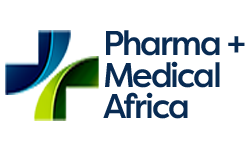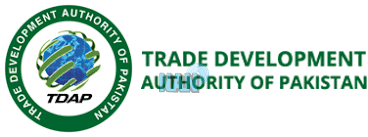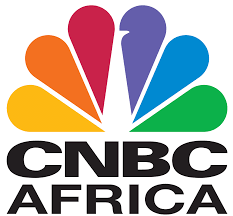Market Insights
Nigeria Pharmaceutical Market
Nigeria is the largest country and economy in the West Africa, with an estimated population of more than 200Mn as of 2022. Pharmaceutical market in Nigeria is presently valued at close to USD 2.5Bn in 2022 and is expected to touch USD 4Bn in 2026.
Nigeria has about 80,000 retail pharmacies and out of that about 4,500 are only registered pharmacies, and more than 70% of revenue potential lies in unregistered and informal outlets served by some 200 wholesalers.
45% of the pharmaceutical consumption is concentrated in the top five Nigerian cities, and per capita spending in big cities can reach almost twice the national average. Cities are important for another reason too: their superior logistics, infrastructure, and healthcare capabilities make them an engine for structural changes in Nigeria’s health system.
Nigeria continues to rely on pharmaceutical imports to meet local demand, despite government aims to make Nigeria’s pharmaceutical market self-sufficient, there continues to be little local drug production. Total Pharmaceutical and medical importation of Nigeria in 2021 touched USD 2.5Bn, with pharmaceutical imports touching USD 1.4Bn and rest is medical equipment’s and devises.
India is the largest supplier to the Nigeria Pharmaceutical and Medical equipment market, with exports touching USD 442Mn in 2022, followed by Netherlands, China UAE Denmark France and others among the top suppliers.
As the first ever health business event/forum that bringing together the key decision makers and captains of the health industry, the exhibition is a attend global event in the healthcare calendar and offers an ideal environment for companies to showcase their products in one of the fastest growing and most lucrative healthcare markets in the world.
West Africa Pharma + Healthcare Exhibition & Conference is expecting 100+ exhibitor this edition with over 5000 visitors from pharmaceutical medical and healthcare industry community from Nigeria & West Africa, and over 100 hosted buyers/partners from the sector.
Nigeria Medical Devices Market
As the second largest economy in Africa with a growing middle class and pro-reform government committed to strengthening the healthcare system, the Nigerian medical device market is set to be beneficial to the country and get better.
While recent macroeconomic headwinds have affected the affordability of treatment, the country’s large and growing population, rising demand for specialty services and the government’s willingness to plan and partner with private providers should help considerably in improving the quality, access and outcomes of patient care in the years to come.
Market Research Future outlines the medical device market as the rising cost of healthcare which stimulated the development of innovative connected products such as wearable medical devices, demand for early detection and noninvasive therapies, growing awareness and spread of information technology, as well as the development of user-friendly devices.
China is the leading supplier of medical devices to Nigeria, with a 68% share of the import in 2021. China was the main supplier of consumables, patient aids, dental products and other medical devices with a particularly dominant position in bandages & dressings, syringes, needles & catheters and therapeutic appliances.
India is the second largest supplier of medical equipment’s and consumables with over 5% share in Nigerian imports in 2021, followed by Ireland, USA, Germany, France, UK, UAE etc.
Medical Measuring and diagnostic instruments and equipment’s, surgical and dental apparatus and items, Orthopedics & prosthetics and consumables, dental instruments etc. represent the largest product area in the Nigerian medical device market, accounting for more than 60% of imports in 2021.
Healthcare Market Insights
Nigeria’s healthcare infrastructure varies considerably between cities and rural areas, and between public and private provision. Overall, the country lacks the medical facilities, equipment, and capabilities it needs to tackle the considerable healthcare challenges it faces.
Nigeria has 0.9 hospital beds per 1,000 people is less than half the global average of 2.3, and its 0.07 intensive-care beds per 100,000 people is a fraction of Kenya’s 0.3. Due to this lack of healthcare infrastructure, an estimated 5,000 patients a month travel abroad for healthcare, with 60 percent needing treatment in cardiology, musculoskeletal, hematology, or oncology. This medical tourism—much of it to India and South Africa—costed more than $1 billion in 2013.
The number of Nigerians leaving the country to seek medical treatment abroad is increasing, and this is having a significant impact in terms of lost revenue on the Nigerian economy. The authorities have said that tens of thousands of Nigerians travel every year to the US, UK, India, Thailand, Turkey, France, Canada, Germany, Malaysia, Singapore, Saudi Arabia, and China, among other countries, to seek treatment for medical issues ranging from kidney transplants, open heart or cardiac surgeries, neurosurgeries, cosmetic surgeries, orthopedic surgeries, eye surgeries and other health conditions, and even delivering babies.
According to PWC, Nigerians spend US$ 1 billion annually on medical tourism with 60% of it on four key specialties, namely: oncology, orthopaedics, nephrology and cardiology. This is nearly 20% of the total government spending on public health sector for the year including salaries of all public sector doctors, nurses and other healthcare workers as well as other health programmes like malaria, tuberculosis, polio and HIV/AIDS prevention as total government expenditure on health sector for the year 2015 which stood at $5.85 billion.
According to statistics from the Nigerian Economic Recovery & Growth Plan 2017-2020, the average life expectancy in Nigeria is 52 years, lower than other African countries, e.g., Ghana (61 years) and South Africa (57 years).
The prevalence of infectious diseases remains high. Nigeria has high incidence of tuberculosis (128 out of 138 countries) and the prevalence of HIV (123 out of 138 countries). In terms of under-five child mortality, there are 89 deaths per 1,000 live births, a level far above the target of 64 deaths per 1,000 live births set in the UN Sustainable Development Goals (SDGs).
However, some progress has been made over the last 20 years. The maternal mortality rate in 2014 was 576 deaths per 100,000 live births compared to 1,000 deaths per 100,000 live births in 1990.
Healthcare expenditure in Nigeria was predicted to reach NGN 5,762.061 billion by 2021 growing at a CAGR of 8.35% Y.O.Y.; up from an estimated NGN 5,318.061 billion in 2020. By 2021, healthcare spending is estimated to make up 2.94% of the country’s GDP. While the government is expected to spend NGN 1,477.77 billion by 2021, the private sector will spend NGN 4,284.469 billion in the same period. This is up from NGN 1,190.71 billion and NGN 3,709.120 billion respectively in 2019.
Key Factors for exploring Nigerian Healthcare Market:
- The country’s large and growing population, with swelling middle class with the capability to pay for services.
- Rising demand for specialty services, with an increase in the incidence of chronic and infectious diseases and the increase in the rate of noncommunicable diseases.
- As per World Health Organization (WHO), Nigeria has one of the largest stocks of human resources for health (HRH) in Africa but, like the other 57 HRH crisis countries, the density of nurses, midwives and doctors are still too low to effectively deliver essential health services (1.95 per 1,000).
- The patient-to-doctor ratio in Nigeria is 2500:1, more than four times higher than the WHO’S recommendation of 600:1. Given this gap and current demography, the country needs up to 10 times its current number/ capacity.
- The contribution of the private sector to the Nigerian healthcare industry is increasing. With rising levels of disposable income among some segments of society and the limited supply of public hospitals that are overstretched and under-funded, there is greater demand for private coverage.
- According to research from OBG, the demand for health services, particularly treatments of maternal health and Non-Communicable Diseases (NCDs), is projected to rise with income and demographic growth, while the low rate of insurance penetration, the economic recovery and policy incentives should create long-term opportunities.









